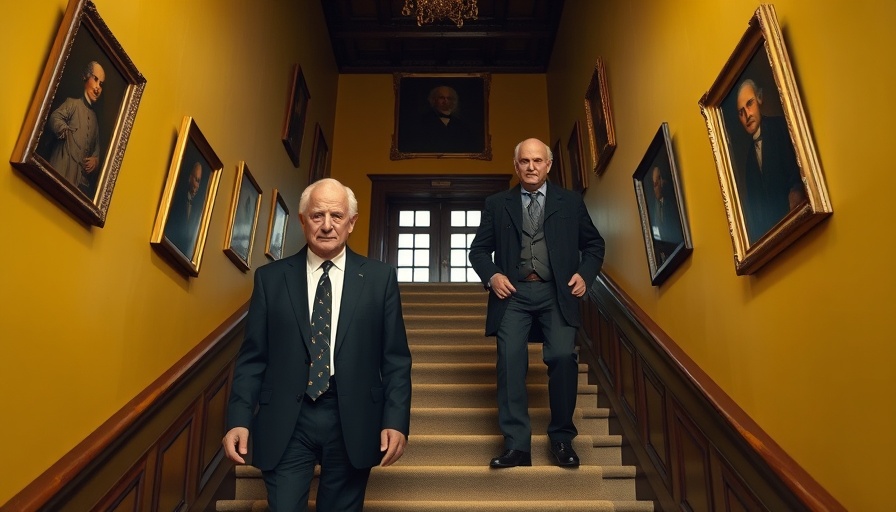
Starmer's Summit: A New Hope for Ukraine
In a decisive move, UK Prime Minister Sir Keir Starmer is spearheading efforts aimed at reviving peace discussions for Ukraine amid ongoing tensions with Russia. As he prepares to convene a summit with President Volodymyr Zelensky and other key Western leaders, the focus is sharply on developing a ceasefire plan that not only addresses immediacy but also lays the groundwork for long-term stability in the region. This comes in the wake of recent turmoil between Trump and Zelensky, highlighting a need for coordinated, unified support for Ukraine as it navigates the complexities of international diplomacy.
Aligning European Interests: A Coalition of the Willing
In outlining a coalition framework, Starmer’s vision centers on establishing a European military force poised to support peacekeeping efforts in Ukraine. This coalition responds to a growing concern among European leaders about the necessity for self-reliance in defense while ensuring a robust response against any resurgence of aggression from Russia. The key component involves not just military personnel but also a concerted diplomatic effort to convince the U.S. to maintain its backing, serving as a security guarantee that legitimizes the coalition’s role.
Lessons from the Past: Bridging Historical Rifts
The recent altercation between Zelensky and Trump in the White House underscores a historical tension in U.S.-Ukraine relations, where American support has often been contingent and fraught with political machinations. Starmer’s approach appears to be an attempt to bridge these gaps, recognizing that Europe's strategic autonomy must be prioritized without entirely relying on U.S. whims. This pivot could signify a paradigm shift in how the West engages with not only Ukraine but also the broader geopolitical landscape dominated by Russia's assertive maneuvers.
Long-Term Vision: Ensuring Sustainable Peace
Starmer's assertion that any peace agreement must be defended robustly emphasizes the lessons learned from previous ceasefires that quickly unraveled. His strategy hinges on creating conditions that not only cease hostilities but also establish a framework that deters future aggression from Putin's Russia. This means leveraging diplomatic tools, economic sanctions, and military readiness to assure Ukraine's sovereignty against existential threats.
Counterarguments: Skepticism About Traditional Alliances
However, skepticism abounds regarding the efficacy of traditional alliances in delivering substantive results. Critics argue that the inconsistency of U.S. leadership, particularly during tumultuous exchanges like the recent Trump-Zelensky clash, compromises trust and the ability for European nations to form an autonomous bloc capable of addressing territorial aggressions. This skepticism is vital and reflects a broader questioning of whether NATO, under its current structure, can adapt to meet the diverse challenges posed by modern warfare.
Public Sentiment: The Civic Will for Peace
Another critical dimension to this summit is the public sentiment in both the UK and across Europe. A populace weary of prolonged conflict and its ramifications on economic stability yearns for a resolution that does not merely replace one conflict with another. Grassroots movements are actively advocating for peaceful resolutions and a sustainable future, positioning their governments to prioritize diplomacy over warfare.
Conclusion: The Path Forward
As leaders gather in London, the stakes are higher than ever. There is a palpable urgency to transform dialogue into tangible actions that can create a lasting peace for Ukraine. In doing so, not only will they affect the immediate safety and stability of the region, but they will also redefine what it means to foster security in an increasingly complex global landscape.
To stay informed about developments in Ukraine and global politics, consider following reputable news sources that provide analysis and commentary on the situation.
 Add Row
Add Row  Add
Add 




Write A Comment